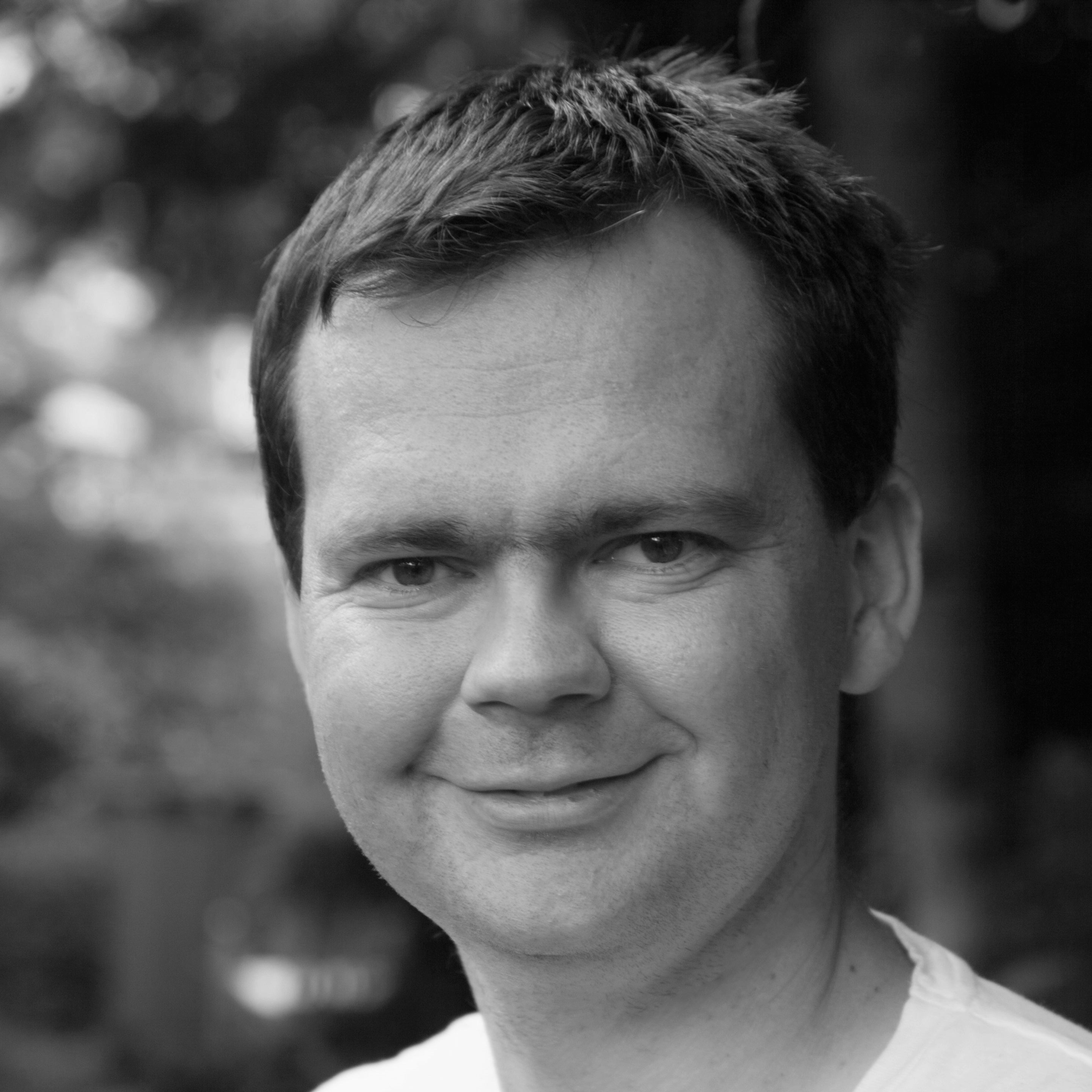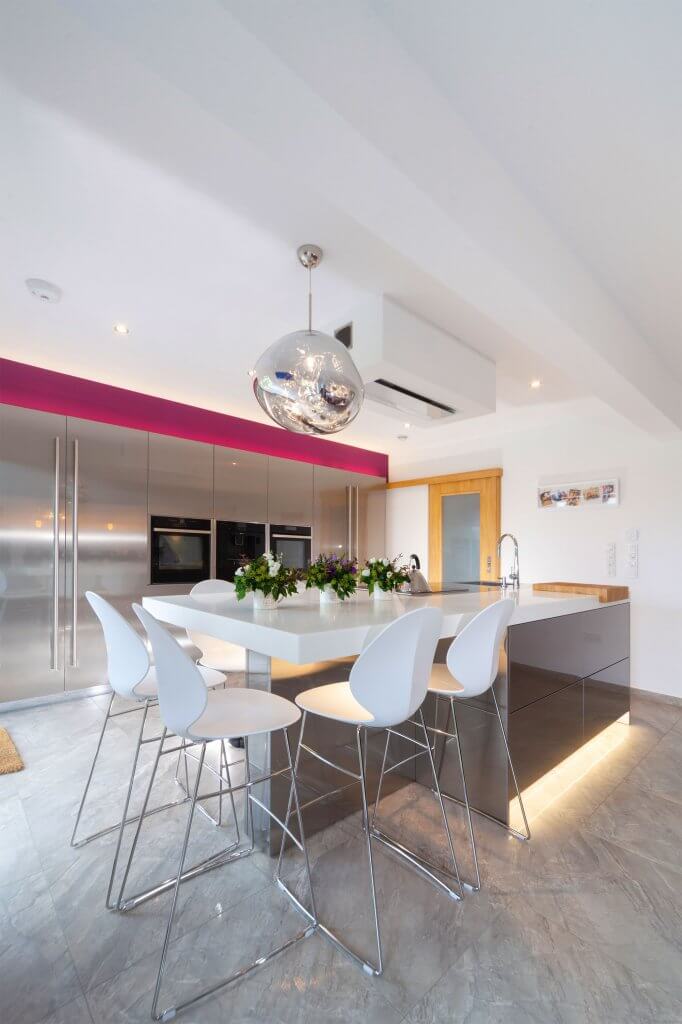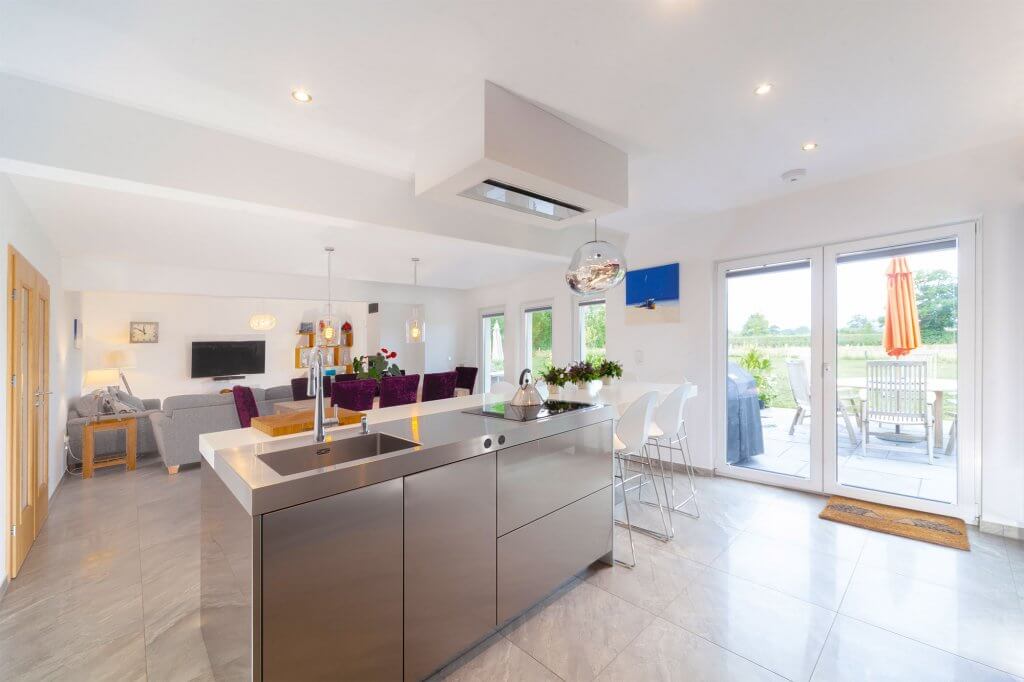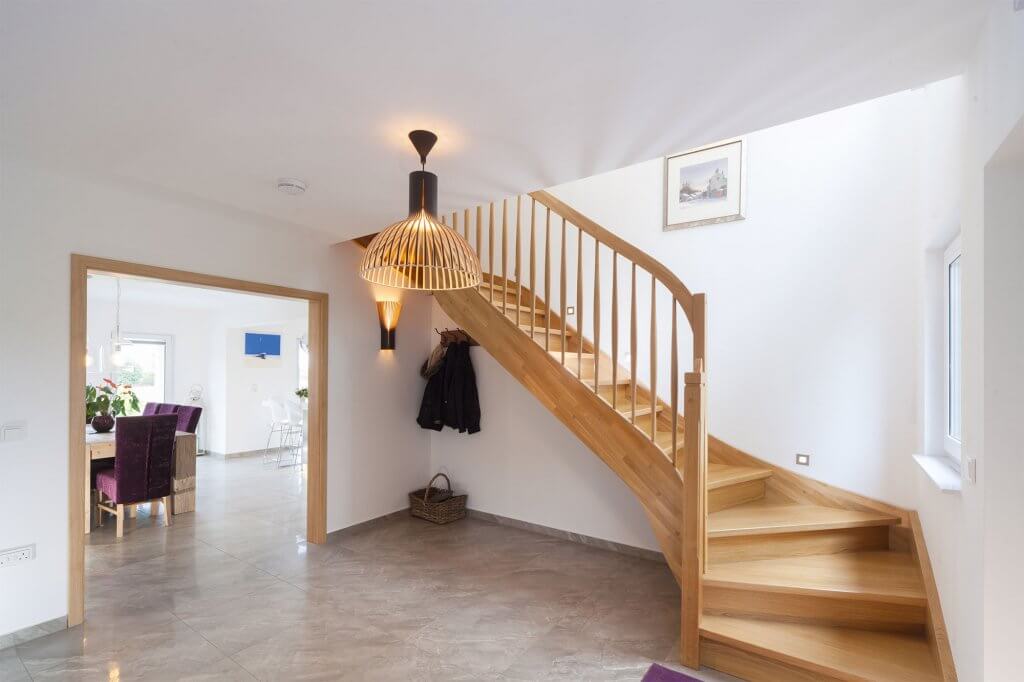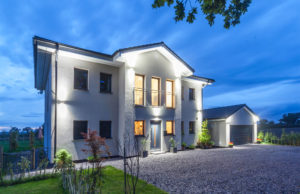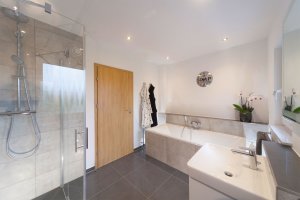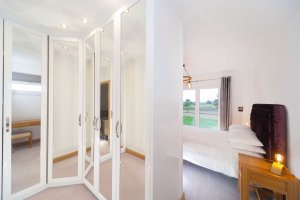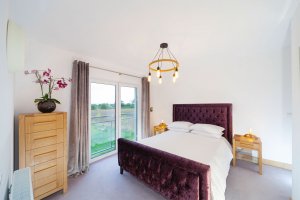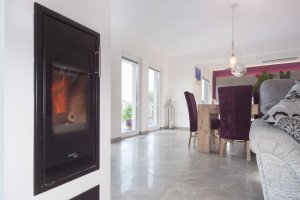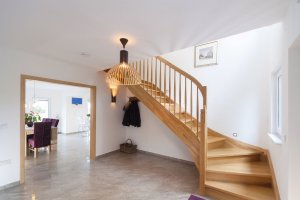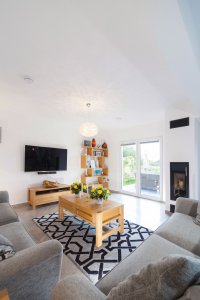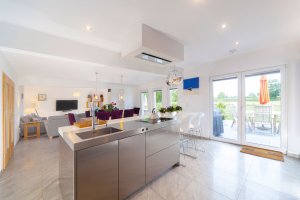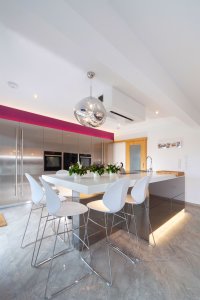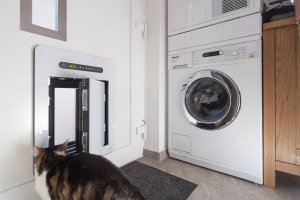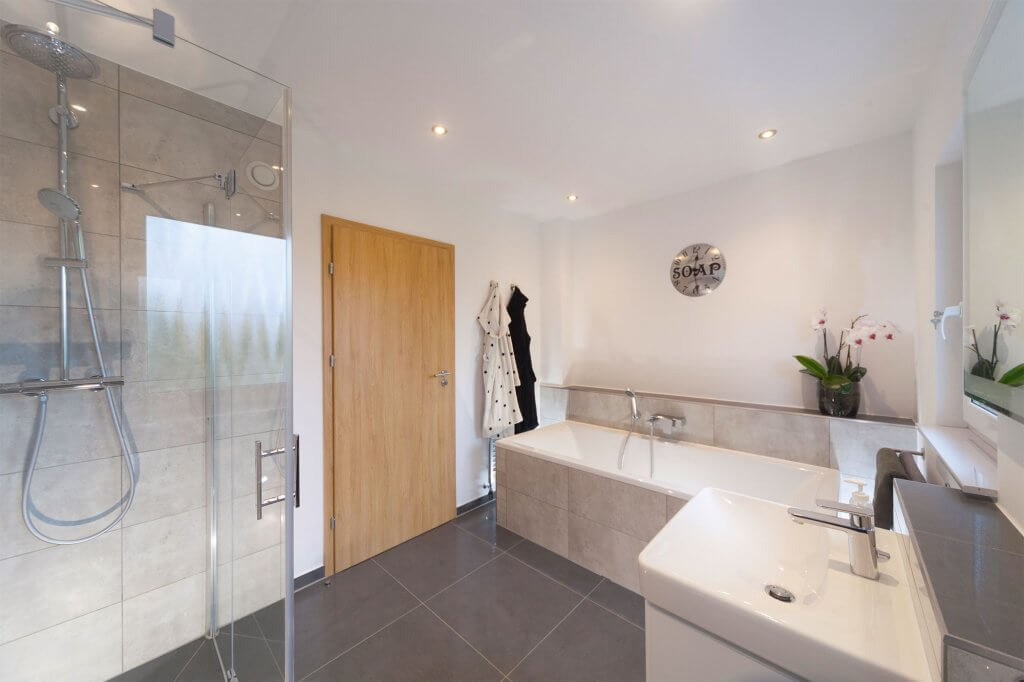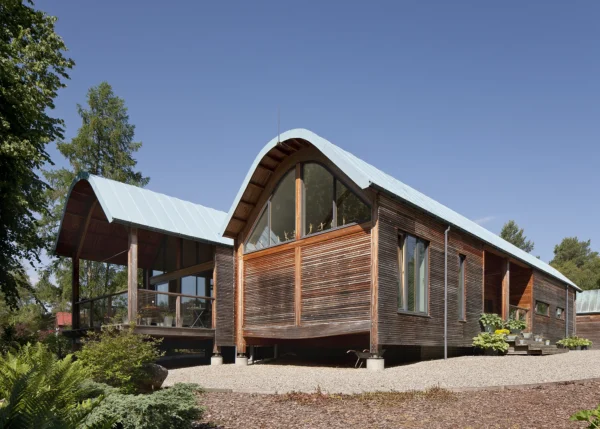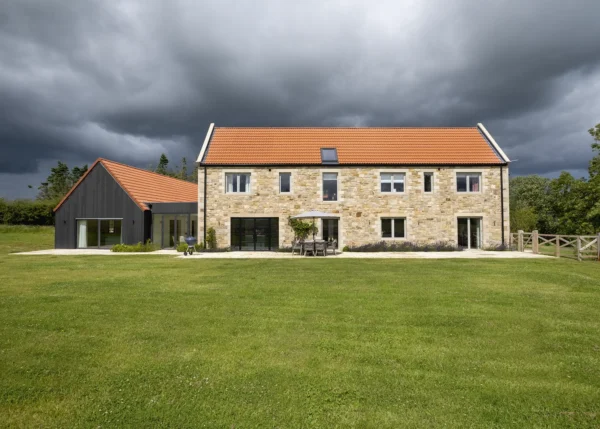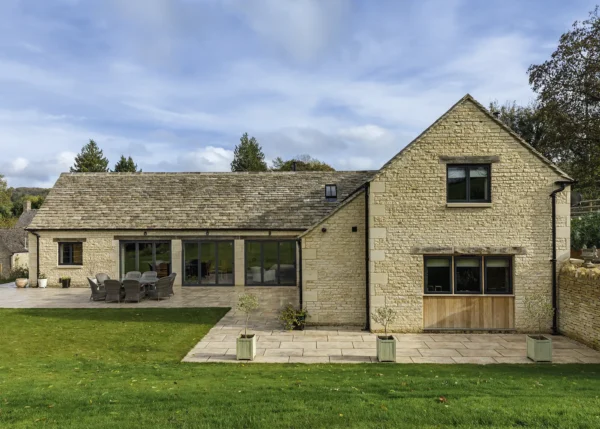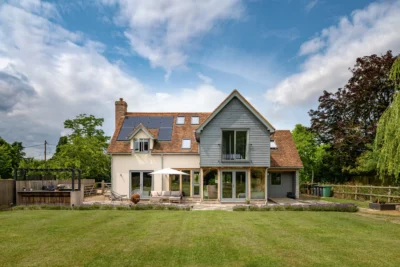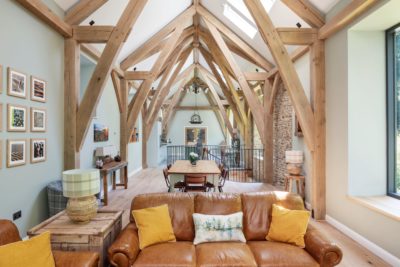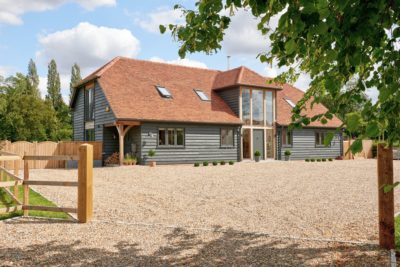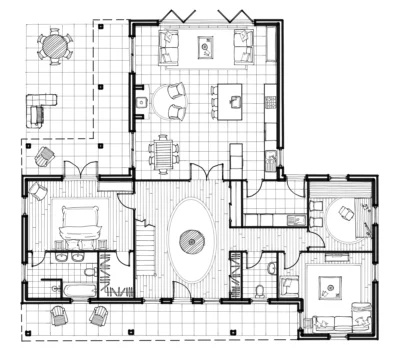Turnkey route to a stunning home in seven weeks
For Jon and Yvonne Easter, self building offered the perfect opportunity to escape the urban rat race of Stockport in favour of a more tranquil way of life in rural Shropshire.
After 25 years of marriage, and with their children now fully grown, the move would be the fulfilment of a lifelong ambition.
The couple had considered relocating a few years earlier, but market conditions had made selling their existing home difficult – it wasn’t until 2015 that they decided the time was right to make the change.
Browsing for suitable plots, they found a site near Shrewsbury that seemed ideal for their requirements.
With the land identified and a price negotiated, they had to move quickly. Thankfully things worked in their favour this time round, as their house sold in just two days.
“We found the plot on Rightmove,” says John. “We were after something peaceful, with idyllic views, but it needed good road access, as my job in civil engineering takes me around the country.”
Picking a build route
Jon and Yvonne were keen to complete their construction project swiftly, so they decided on a turnkey route.
This approach means the design, materials supply and much of the construction work is all taken care of by a single company.
The Easters chose to appoint Dan-Wood as their project partner, allowing them to select an off-the-shelf house plan – they picked the Classic 184E – which could then be tweaked to suit their individual living requirements.
“We opted for this approach because of the ease and speed of the construction,” says Yvonne. “The website was very user friendly, providing lots of information to help us decide.”
The couple worked with Dan-Wood’s nominated architectural consultants, Wireframe Studios, to adapt the layout.
“We wanted to add a fourth bedroom for visiting family, as well as maximise the upstairs space by removing the hall void,” says Jon. “Making these changes improved our use of the house and added value”.
With a turnkey project, you make all the decisions – right down to socket and switch positions – before the house shell is manufactured.
Freezing the design this way allows for the provision of a foundation and utilities specification, and even more importantly, a final fixed cost of the structural elements of the scheme.
In most cases, you’ll need to prepare the site and foundations, at which point the turnkey supplier will take over to complete the rest of the construction work.
- namesJon & Ivonne easter
- locationShropshire
- type of projectSelf build
- construction methodSIPs
- project routeTurnkey
- plot size2,300m2
- land cost (2016)£118,000
- House size231m2
- project cost£395,402
- project cost per m2£1,712
- Total cost£514,156
- VAT reclaim£6,853
- Building work took (2016)Seven weeks
- Current value£580,000
Securing planning
The site Jon and Yvonne identified, set in the corner of an existing field, already had outline planning permission.
So the scale and nature of a proposal acceptable to the council had already been established – but the couple needed to gain full planning consent for their exact scheme.
“The agent helped us negotiate an agreement that we’d go ahead with the sale subject to full planning consent being given,” says Yvonne. “This is important as it ensures that, when you purchase the plot, you know you can use it as intended.”
The patch of land they ended up with, however, wasn’t quite the one they’d originally seen.
It was discovered that a set of overhead cables on the site were not telephone lines, as initially thought, but electricity – and the cost of rerouting them would have been prohibitive.
“Fortunately, the farmer from whom we purchased the plot was very accommodating and agreed to change the shape so that it no longer encompassed the power lines,” says Yvonne.
Before they could put in their application, a number of factors needed to be considered – including the project’s impact on the surrounding environment.
The couple contracted SLR Consulting to help with this aspect of the scheme. They were able
to assist with the location of the driveway, which had to be changed to avoid damaging tree roots, and a plan for preservation of wildlife in the existing hedgerow.
Access onto the highway also presented a problem; and it was determined that a clear triangular area would need to be carved out to provide a visibility splay to allow oncoming vehicles to be seen.
“This could have been a source of complication, however the farmer who owned the land was very helpful, and we were able to make the necessary changes,” says Jon.
The couple financed their project through a combination of the sale of their previous house, plus a self build mortgage.
“We used a broker to find the right lender, although with hindsight it was probably unnecessary as the process was straightforward,” says Yvonne.
“But what’s important is that the mortgage is suitable for major construction projects.”
The funds need to be released in stages according to the value of the project at that phase of the works.
On the subject of finance, Yvonne adds: “Even though using a package house company gives you better control of costs, it’s still important to keep a contingency fund in place.”
Getting out of the ground
Before Dan-Wood could bring its team on site, the Easters needed to arrange the foundations. The clay soil failed percolation tests for surface water soakaways.
Initially, it seemed the solution would be to create a large swale (lower section of ground) to deal with rainwater runoff.
Jon and Yvonne contacted drainage consultancy Eastwood & Partners, whose advice enabled a redesign using soakaway crates in tandem with an orifice plate, which can measure and control flow rates.
The advantage of this solution is that it is smaller and hidden underground, thereby reducing environmental and visual impact.
The couple worked with local company GAD Groundworks & Building for their foundations, driveway and the creation of a stable hardcore base for a crane – a requirement for Dan-Wood to construct the house.
Electricity and water also needed to be brought on site and connected before the main building phase could commence.
Once the foundations were complete, Dan-Wood sent a surveyor in to review the site and ensure everything was ready for the team to get underway.
Smooth progress
With a turnkey service, once the design is frozen, the supplier manages the construction process on your behalf.
So apart from a few finishing details, and unless you particularly wish to be more involved, there’s very little need for input from the self builder, as you’ve already made all the key design decisions.
“Dan-Wood’s site manager was great and their staff have a good work ethic,” says Jon. The build process was incredibly slick, largely thanks to the fact the company uses a prefabricated technique.
The shell is constructed of structural insulated panels (SIPs) that are manufactured at the factory in Poland, before being transported to site for assembly.
The panels also include elements such as pre-fitted windows, which speeds up the process even further and helps to guarantee good airtightness at joints (this project achieved an air permeability rating of 1.1 m3/h/m2, which easily beats the Regs threshold of 10).
“I was surprised at just how quickly the structure went up,” says Jon. “Every time we saw it, things had noticeably progressed.”
In fact, the bulk of the build process was completed over just a seven-week period, starting on 30th January 2017 – although a few interior details and the landscaping followed later on.
SIPs are basically a sandwich, consisting of two layers of oriented strandboard bonded to an inner core of insulation – providing excellent thermal performance and structural strength.
As well as the windows, the Dan-Wood panels were supplied with an extra layer of external insulation and render pre-installed, while internally, a polythene vapour barrier and plasterboard lining were already in place.
Among the house’s other energy efficient features are the use of triple glazing, an air source heat pump powering underfloor heating, and a mechanical heat recovery ventilation system that enhances performance and provides filtered fresh air.
The pump qualified for the government’s Renewable Heat Incentive (RHI), which offers payments for up to seven years. The Easters receive £131.93 per quarter for their setup.
Kitting out the house
Although Dan-Wood offers customers the chance to self-finish their home’s interiors, the Easters preferred the idea of going full turnkey – so the contract covered the plumbing and other infrastructure, doors, stairs, tiling, flooring, sanitaryware and internal decoration.
The only thing that isn’t included is the kitchen, largely because there’s so much choice out there on the market.
“We used a Dutch supplier, Sanidero Concept Store, and fitted a stainless steel design with NEF appliances,” says Yvonne. “I found them by Googling for ex display kitchens. We used a currency broker, purchasing the kitchen in Euros, which meant we could use the exchange rate to make our money go further.”
Among the other notable features of the fit-out is a PetWalk cat flap, designed to preserve airtightness to Passivhaus standards and only opens on detection of the cats’ microchips.
The couple moved into their new property on the 20th March 2017, although the landscaping process took a few more months to complete.
The couple used local contractors for the external works, including the gates, walls, patio and planting.
With the house now complete, it’s clear the pair are delighted with their new country way of life.
Asked what he enjoys most about the house, Jon replies: “The light and the views.”
Perhaps the best place to experience this is the upper storey family room’s balcony, which offers beautiful vistas over the surroundings.
“For me it’s the silence,” says Yvonne. “Details like the lips around the doors and windows, which form part of the ventilation system, are also extremely soundproof. It’s so different to our old home. We love it here.”
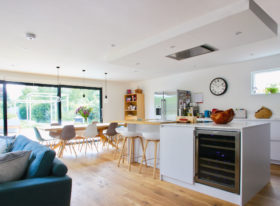
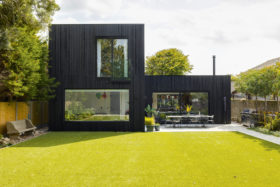































































































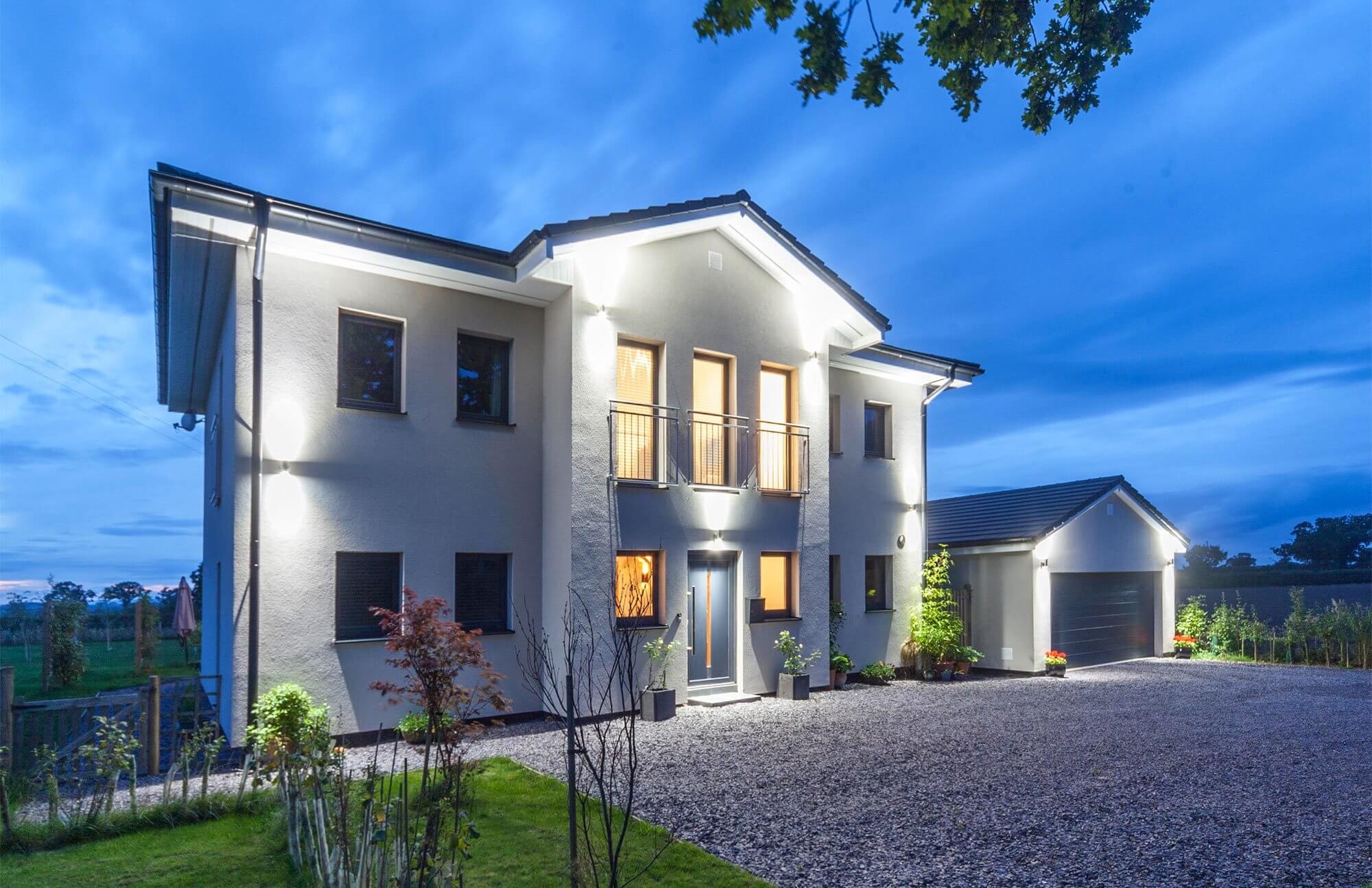
 Login/register to save Article for later
Login/register to save Article for later
